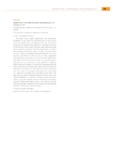Use este identificador para citar ou linkar para este item:
http://www.alice.cnptia.embrapa.br/alice/handle/doc/1068479Registro completo de metadados
| Campo DC | Valor | Idioma |
|---|---|---|
| dc.contributor.author | MARINHO-PRADO, J. S. | pt_BR |
| dc.contributor.author | PALOMO, Y. I. F. A. | pt_BR |
| dc.contributor.author | GARCIA, P. T. M. | pt_BR |
| dc.contributor.author | VENÂNCIO, L. | pt_BR |
| dc.contributor.author | SA, L. A. N. de | pt_BR |
| dc.date.accessioned | 2017-06-30T00:04:42Z | - |
| dc.date.available | 2017-06-30T00:04:42Z | - |
| dc.date.created | 2017-04-13 | pt_BR |
| dc.date.issued | 2016 | pt_BR |
| dc.identifier.citation | In: INTERNATIONAL CITRUS CONGRESS, 13., 2016, Foz do Iguaçu. Sustainable citriculture: the role of applied knowledge: abstract book. Campinas: IAC; Londrina: IAPAR, 2016. Resumo S4-263. | pt_BR |
| dc.identifier.uri | http://www.alice.cnptia.embrapa.br/alice/handle/doc/1068479 | pt_BR |
| dc.description | The Asian citrus psyllid, Diaphorina citri (Hemiptera: Psyllidae), is considered an important pest of citrus by its ability to transmit the HLB disease. Thus, the aim of this study was to evaluate the potential of protease inhibitors for the control of this insect. The tests were performed with Murraya paniculata plants. The following aqueous solutions were applied: (1) distilled water (control), (2) Triton X-100 (0.1 m L-1) and (3) cysteine proteinase inhibitor E-64 (0.05 mg mL-1) and Triton X -100 (0.1 mL L-1). Four treatments were performed: solutions (1), (2) and (3) were applied four days before the release of the insects on the plants and for the last treatment, solution (3) was applied immediately before the insects release. The solutions were applied to the stem of the plant, 20 mL per plant. Were used five plants per treatment. Ten adults of D. citri were released on each plant after four hours of starvation. Each plant was maintained in a cage and mortality was observed for five days. The data was analyzed by Tukey test (p>0.05). There was no significant difference in mortality of insects among the treatments. Enzymatic analysis showed that there is enzymatic activity of cysteine p roteases in the D. citri midgut, thus, the low mortality after ingestion of this compound may indicate the need to adapt the bioassay method. | pt_BR |
| dc.language.iso | eng | eng |
| dc.rights | openAccess | eng |
| dc.subject | E 64 | pt_BR |
| dc.subject | Asian citrus psyllid | pt_BR |
| dc.subject | Huanglongbing | pt_BR |
| dc.title | Inhibitor of cysteine protease and mortality of Diaphorina citri. | pt_BR |
| dc.type | Resumo em anais e proceedings | pt_BR |
| dc.date.updated | 2017-06-30T00:04:42Z | pt_BR |
| dc.subject.nalthesaurus | Diaphorina citri | pt_BR |
| dc.subject.nalthesaurus | Greening disease | pt_BR |
| dc.format.extent2 | p. 69. | pt_BR |
| riaa.ainfo.id | 1068479 | pt_BR |
| riaa.ainfo.lastupdate | 2017-06-29 | pt_BR |
| dc.contributor.institution | JEANNE SCARDINI MARINHO PRADO, CNPMA; Y. I. F. A. PALOMO; P. T. M. GARCIA; L. VENÂNCIO; LUIZ ALEXANDRE NOGUEIRA DE SA, CNPMA. | pt_BR |
| Aparece nas coleções: | Resumo em anais de congresso (CNPMA)  | |
Arquivos associados a este item:
| Arquivo | Descrição | Tamanho | Formato | |
|---|---|---|---|---|
| 2016RA054.pdf | 227,74 kB | Adobe PDF |  Visualizar/Abrir |









